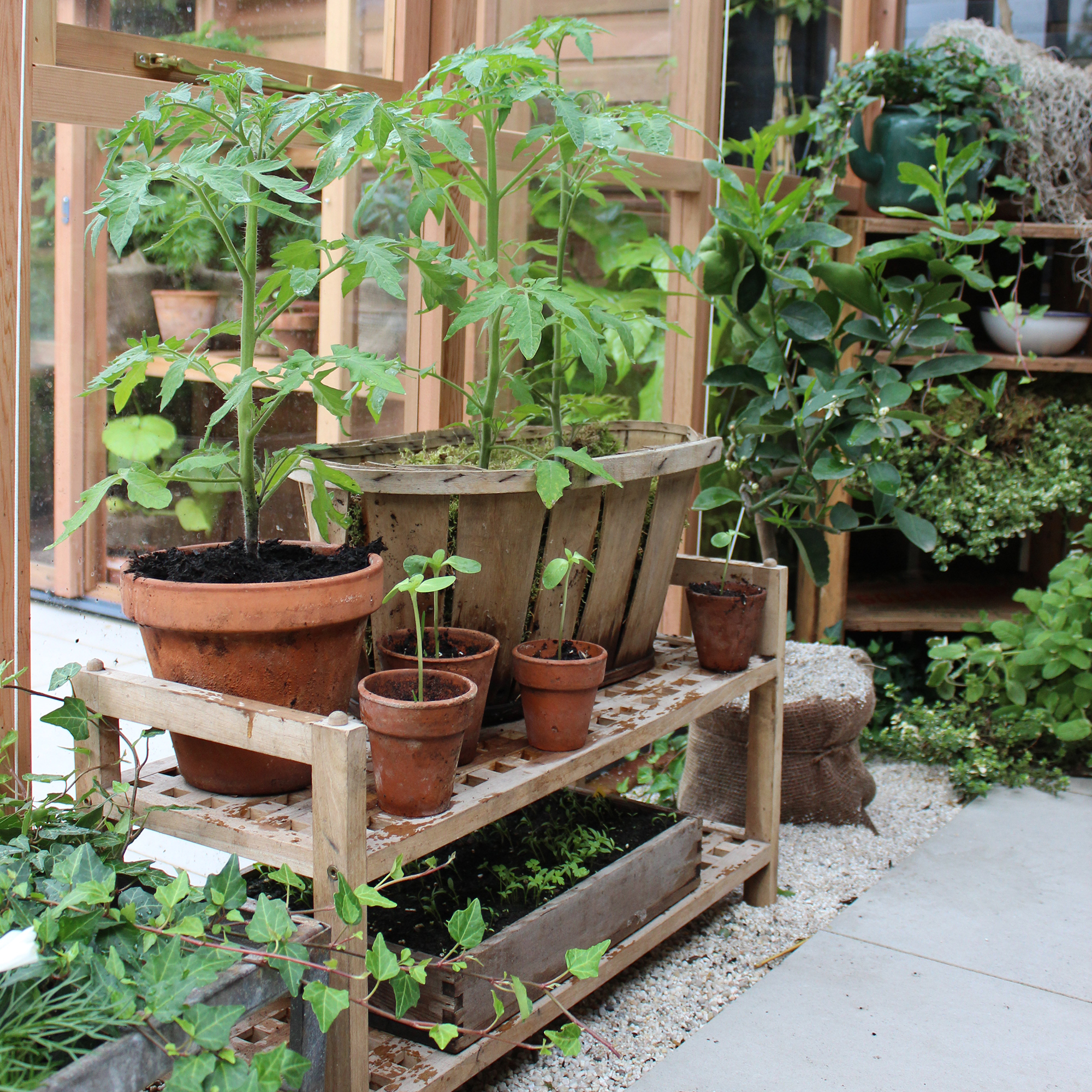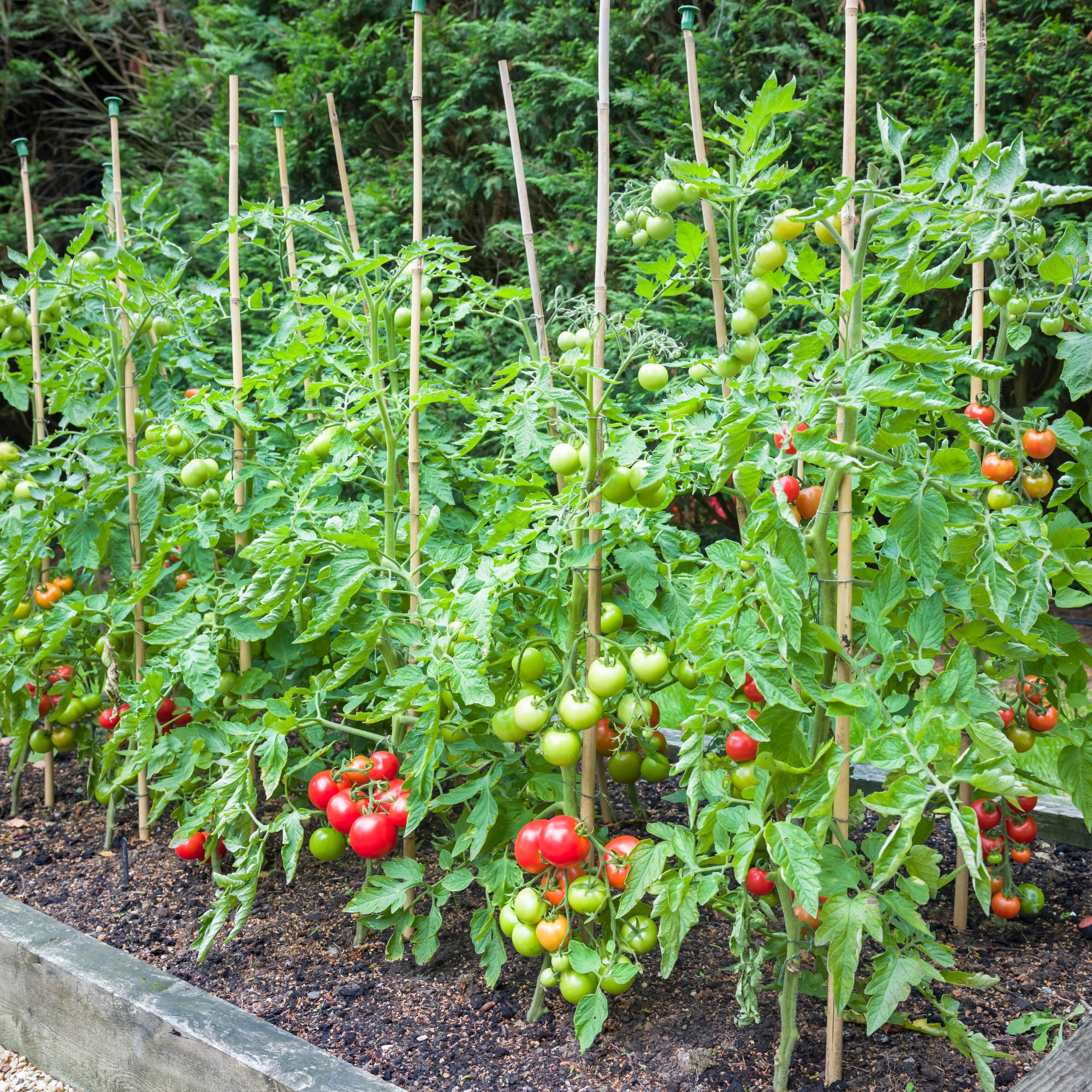How to grow tomatoes like a pro – an expert guide for the best results
They're the ultimate garden staple, so here's our expert guide to growing tomatoes


It doesn't matter if you say to-may-to or to-mah-to: when it comes to learning how to grow tomatoes, there's really only one way to go about things (if you listen to the experts, that is).
The ultimate grow your own option for beginners, you can grow tomatoes in pots, in your garden or allotment, or even on your windowsill. And, as they're considered one of the best crops you can plant in February, now is the perfect time to get planting the T to your BLT.
From when to sow them to how to harvest them, here's everything you need to know about growing your own tomatoes. You're very welcome.
How to grow tomatoes
Tomatoes are one of the easiest vegetables to grow that are beginner-approved, so it's not all that surprising that they're a very popular option for GYO newbies and enthusiasts alike.
'Tomatoes are such a popular crop to grow at home for so many reasons,' says Morris Hankinson, director of Hopes Grove Nurseries.

Morris Hankinson is the founder and managing director of Hopes Grove Nurseries Ltd, the UK’s only specialist grower-retailer of hedging plants. He established the thriving business in 1992, shortly after graduating with a Commercial Horticulture Degree from Writtle College, Essex.

'Depending on the variety, they can be grown in pots, hanging baskets, undercover in a greenhouse or polytunnel, and even outside in a sheltered, sunny space,' continues Morris.
'There are so many varieties available, there has to be a tomato for everyone!'
Sign up to our newsletter for style inspiration, real homes, project and garden advice and shopping know-how
What you will need
As tomatoes are such an adaptable crop, there are many options available to you – which means that your shopping list will look a little different depending on whether you choose to grow them in pots, hanging baskets, grow bags (like the Westland Big Tom Tomato Planter Large Grow Bag from Amazon), or straight in the garden.
As a general rule of thumb, though, you'll need to buy tomato seeds (or pre-grown tomato plants):
- Thompson & Morgan: An abundance of tomato seeds to choose from
- Crocus: A wide selection of tomato seeds
- Amazon: A surprising array of tomato seeds available
'With so many varieties available including various colours, sizes, uses and flavours, it can be a difficult decision to choose which tomatoes to grow,' says Morris.
'If you want to grow them in pots or hanging baskets, look for a tumbling variety such as 'Tumbling Tom Red' from Crocus or 'Tumbling Tom Yellow'. If you are growing in a greenhouse or polytunnel, there are so many options – from big tomatoes such as 'Buffalo Steak' and 'Marmande', or try trusted varieties 'Sungold' and 'Gardeners Delight'.'
Morris adds that 'dark tomatoes, such as 'Indigo Cherry Drops' from Thompson & Morgan and the heritage tomato 'Black Beauty' are also great to grow in a greenhouse.'
As well as tomato seeds, you'll also need:
- A good quality peat-free compost, like Miracle-Gro Peat Free Premium All Purpose Compost from Homebase
- Some vermiculite (try Gro-Sure Vermiculite Plant Food from Homebase)
- A supportive cane, like the Mininfa Natural Bamboo Canes from Amazon
- A high potassium liquid fertiliser, like Levington Tomorite Concentrated Plant Food from Amazon
Step-by-step guide

'Tomatoes do need plenty of care from sowing to harvesting but the harvest will be worth it,' promises Morris, insisting that homegrown toms will be more tasty than any shop bought ones (which is more than enough reason to learn how to grow tomatoes, in our opinion!).
Christopher O'Donoghue, one of the co-directors at Gardens Revived, agrees. 'Depending on when you plant them, your tomatoes will need some warmth, but they'll repay you for your kindness with a seriously tasty salad come summer!'

A gardener with over a decade of experience under his belt, Christopher set up Gardens Revived with his brother, Andrew, in 2018 to create a thriving family business. Together, they have worked on residential gardens, listed buildings and gardens, flower shows and large estates with some exceeding 70 acres – many with historical significance.
Inspired to start growing your own tomatoes, then?
1. Sow your tomato seeds
If you want to sow seeds successfully, you need to take a little time preparing the area for your baby tomatoes.
'Sow two or three seeds in late February to early March in 7.5cm pots of peat free compost and then add a thin layer of vermiculite on top,' says Morris.
'This helps with moisture and aeration, meaning seeds are likely to germinate well.'
2. Keep them warm and moist

Once you've prepped your tomato seeds, it's time to water them lightly and either stand them on a warm windowsill (or in a heated propagator).
'If they are on a sunny windowsill or in a greenhouse they can also be covered with cling film but remove it as soon as the seeds germinate,' says Morris.
Christopher urges you not to overwater your seeds, but instead to focus on keeping the compost moist instead of sopping wet.
3. Watch them carefully
Learning how to grow tomatoes is a lesson in patience more than anything, as you will need to wait for your seedlings to get to about 3cm tall before you pot them on.
'Be sure to carefully transplant seedlings to individual small pots filled with peat free compost,' says Morris, who suggests that you use a 'dibber or something like a pencil to gently lift them from the compost'.
Keep them in a light, warm place and continue to pot them into bigger pots as they grow. 'This might be three times over the growing season,' he adds.
4. Give them some support

As the stems on your tomato plants get taller, Morris says that you should 'use small canes or pea sticks to support the growth'.
'Each time you plant tomatoes, plant them quite deeply so the first set of leaves is just above the soil,' he advises. 'The stems under the soil will produce more roots giving them strength and good growth.'
5. Harden off your tomatoes
After all frosts have passed, usually in May, move your tomatoes to 30cm pots for greenhouse or outside container growing.
'They will need to be hardened off first, meaning if they are going outside they will need to be acclimatised,' says Morris. 'Put then outside during the day and bring them in late afternoon for a few weeks, extending the time they are outside until they can tolerate overnight as well.'
Don’t forget to include some supports at this point such as bamboo canes.
6. Get mulching

Christopher says that mulching is one of the most important jobs any gardener can take on, especially when learning how to grow tomatoes.
'If you're planting directly into the soil, be sure to lay a thick layer of mulch over the soil around your tomatoes,' he says. 'This will help help hold in moisture and deter weeds.'
Not only this, but mulching can also stop your tomato leaves from curling.
7. Harvest and enjoy
Harvest time is, of course, the most exciting part of learning how to grow tomatoes – not least of all because you can enjoy the fruits of your labour!
'They begin to ripen from about mid summer and you will notice smaller varieties will be ready before bigger varieties so growing a mix can be helpful to extend the harvests,' says Morris.
'Simply pick each tomato when ripe and enjoy! If for any reason the plants are struggling or it’s late in the season, you can remove the unripe fruits and place them in a warm but dark place at home to finish ripening.'
FAQs
How do you look after tomatoes?
Once they are planted in their final growing position, Morris says that your tomatoes will need regular watering and a tomato feed, such as Seaweed or Tomorite, every 10 to 14 days to help with fruiting.
Don't forget that tomatoes will need support, including string to tie up and to a cane as they grow bigger, and that 'mulching can be useful to retain moisture with some well rotted organic matter'.
What happens if you don't pinch out tomatoes?
Pinching out the flowers of your tomatoes is a vital step in the growing process, depending on the variety you choose.
'If you are growing a cordon variety (these grow vertically) make sure you pinch out the side shoots so the energy goes into producing fruit and not more foliage,' says Morris.
'Just use your fingernails to pinch off the little shoots growing from the main stem. If you are growing a bush variety, the side shoots can be left as they are.'
Should I cut the first flowers off my tomato plants?
Many gardeners recommend pinching off the first set of flowers a tomato plant produces in late spring, as this will help drive energy back into the fruit-making process.
'Tomato flowers need to be pollinated by insects, so if you are growing them undercover make sure the door and vents are opened so bees and other pollinators can access the flowers,' adds Morris.
'If this isn’t possible you can gently tap or shake the flowers to help the pollen move about and transfer between flowers.'
Now that you know how to grow tomatoes, the world is very much your oyster (or tomato-based equivalent) – from chutneys to sauces, salads to stews, there is plenty of delicious eating to be had from these versatile and easy-to-grow fruits.
Bon apetit!

Kayleigh Dray became Ideal Home’s Acting Content Editor in the spring of 2023, and is very excited to get to work. She joins the team after a decade-long career working as a journalist and editor across a number of leading lifestyle brands, both in-house and as a freelancer.